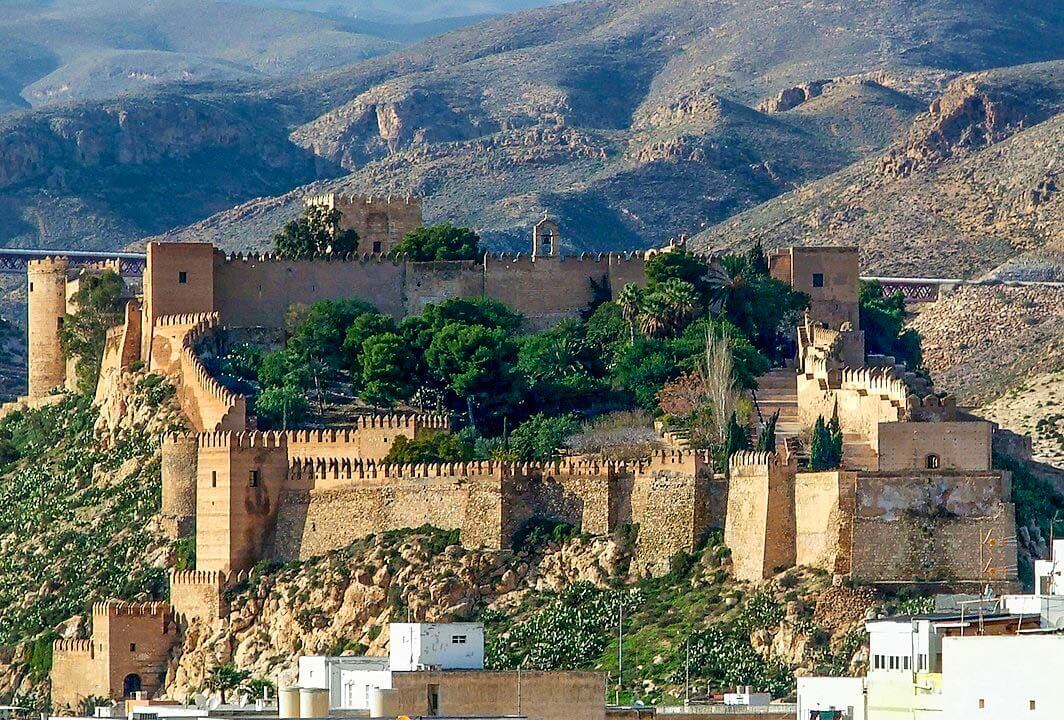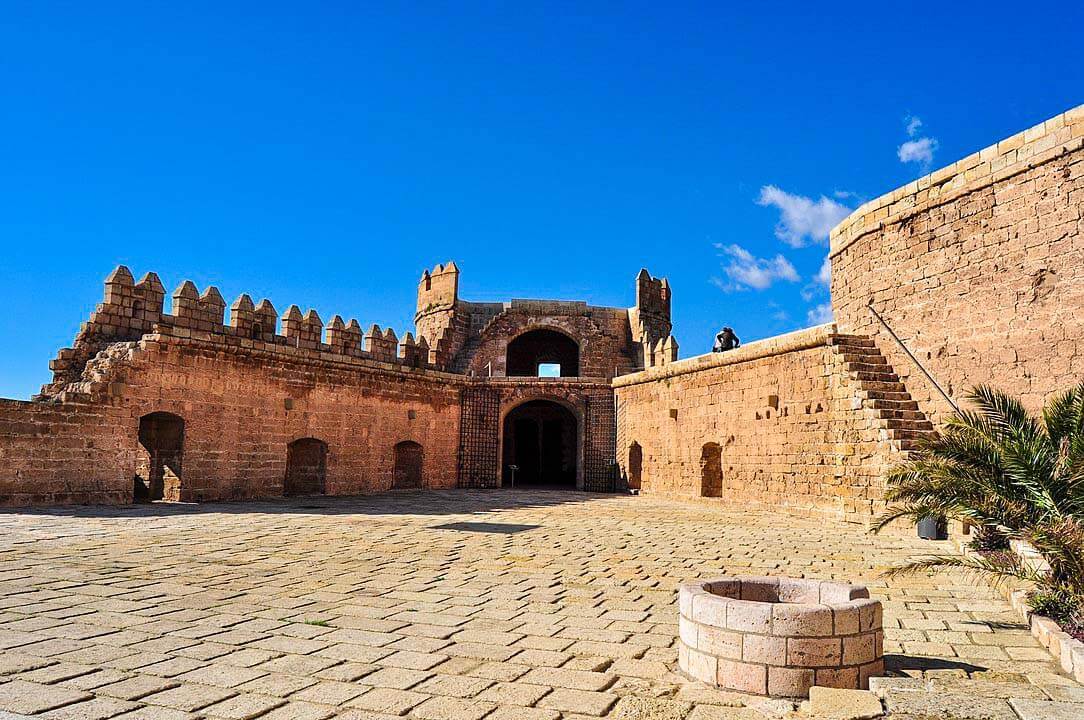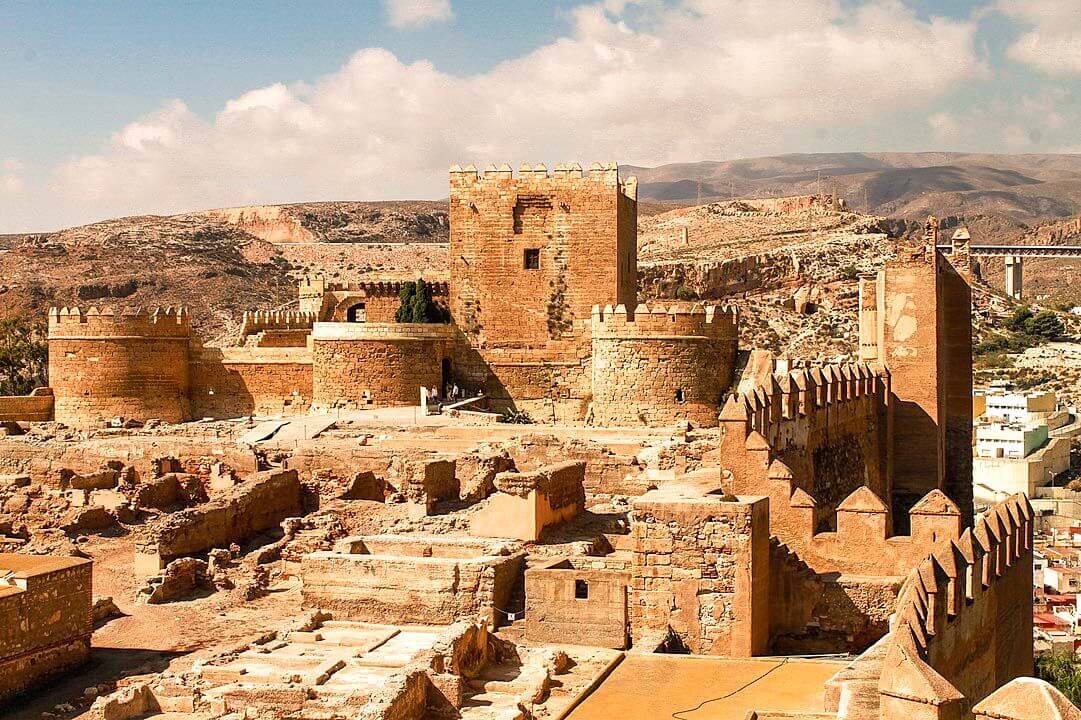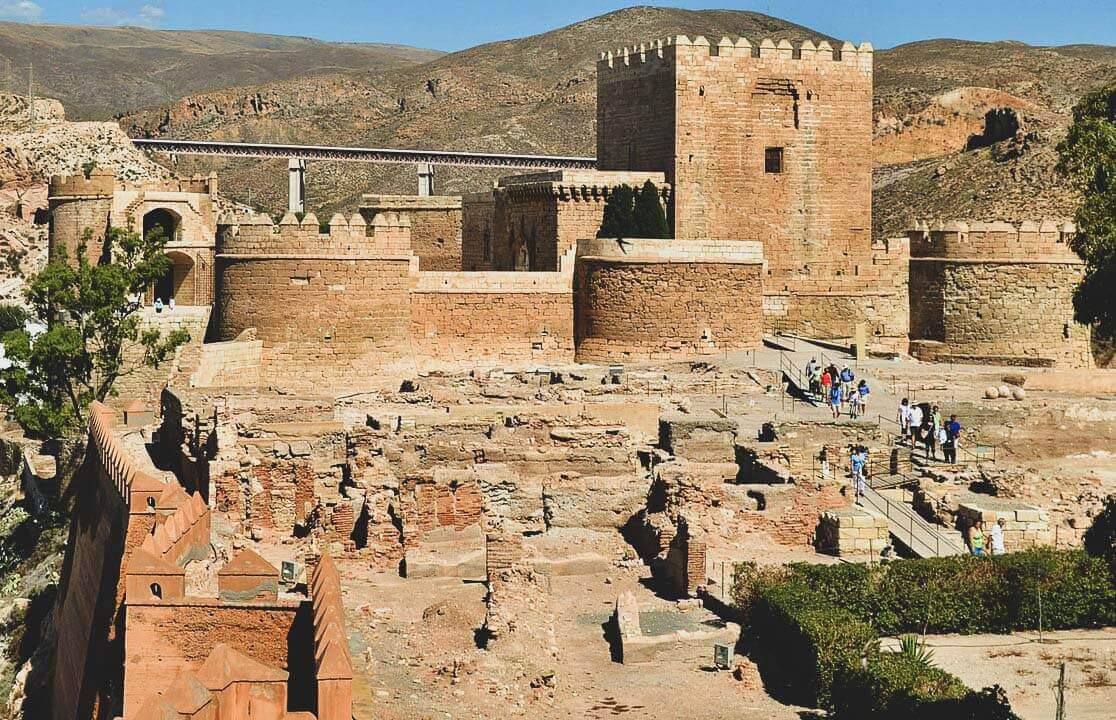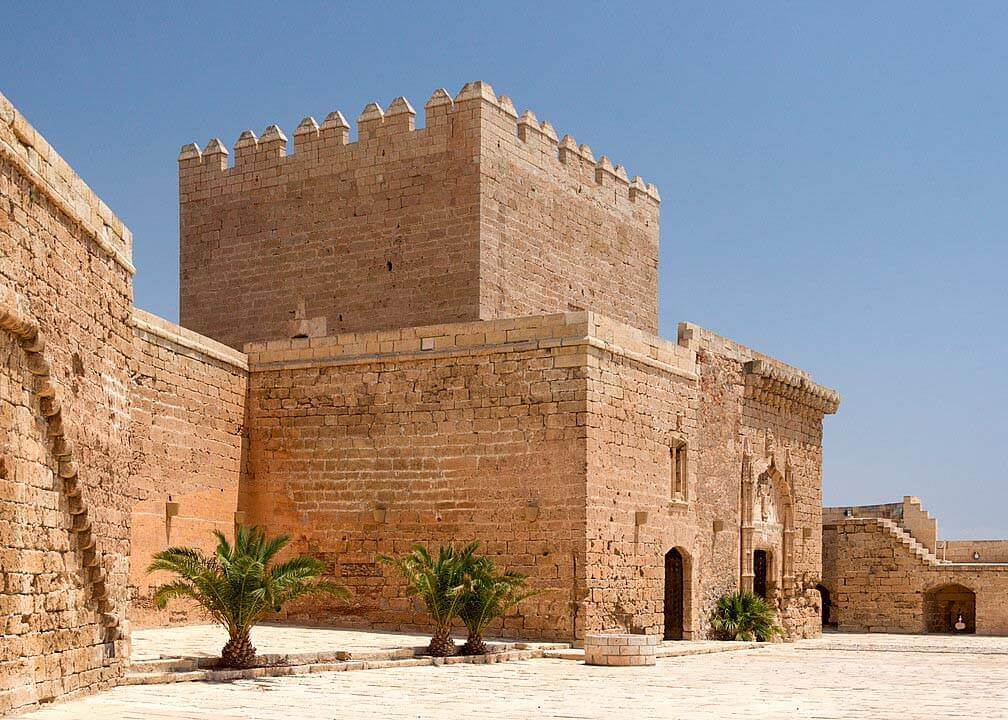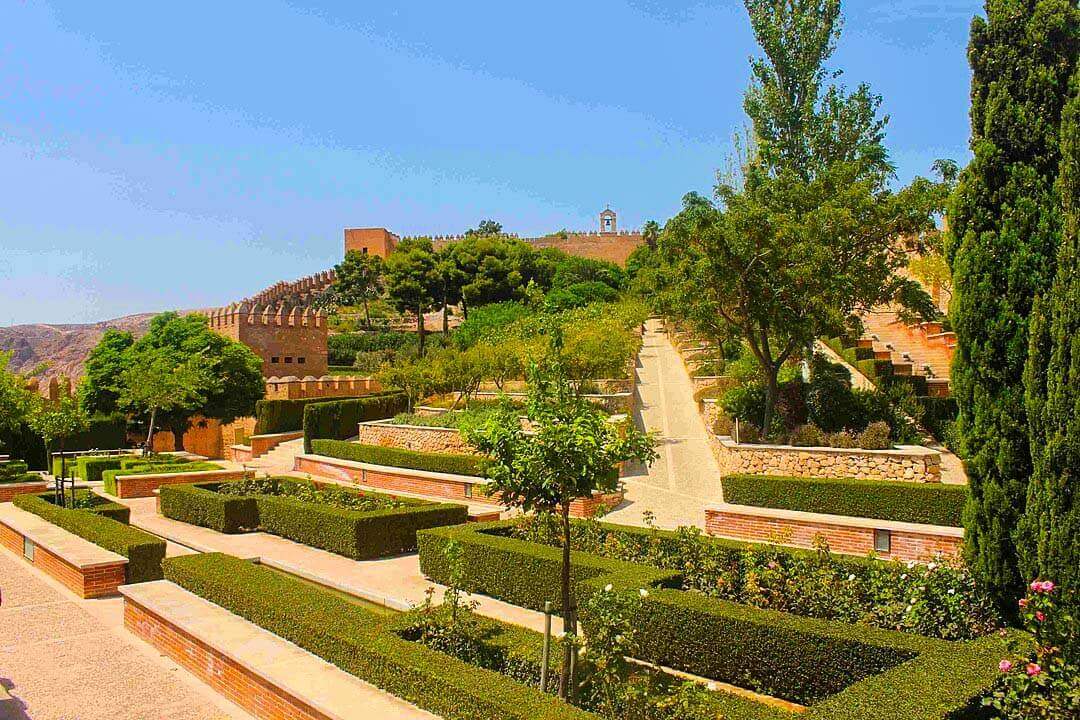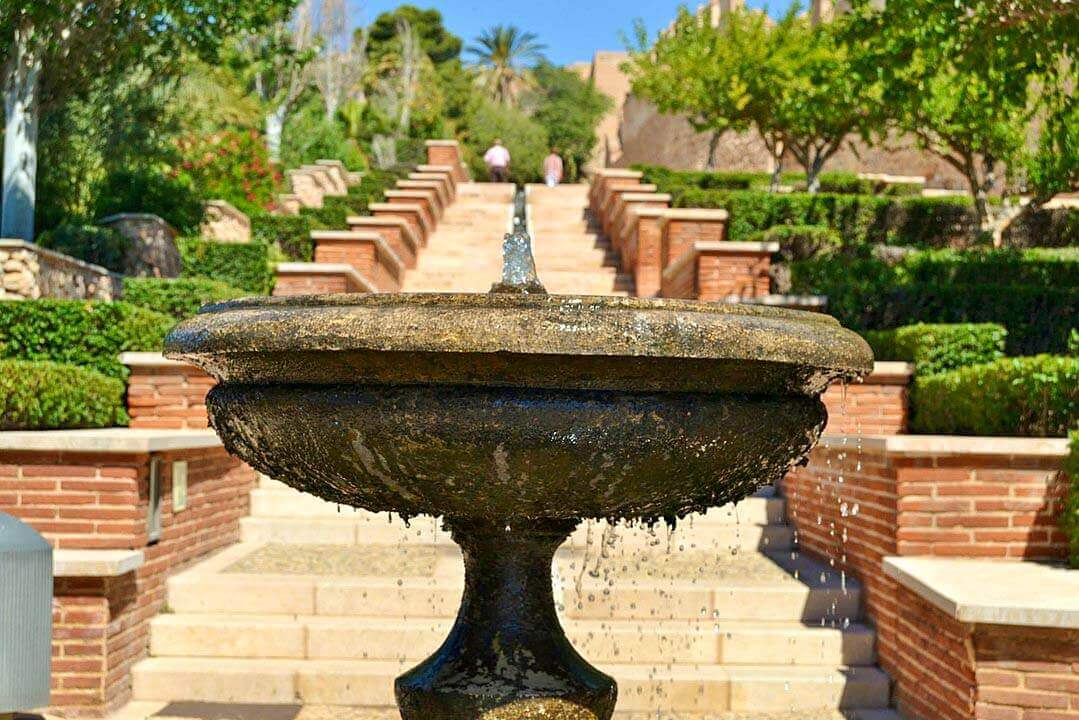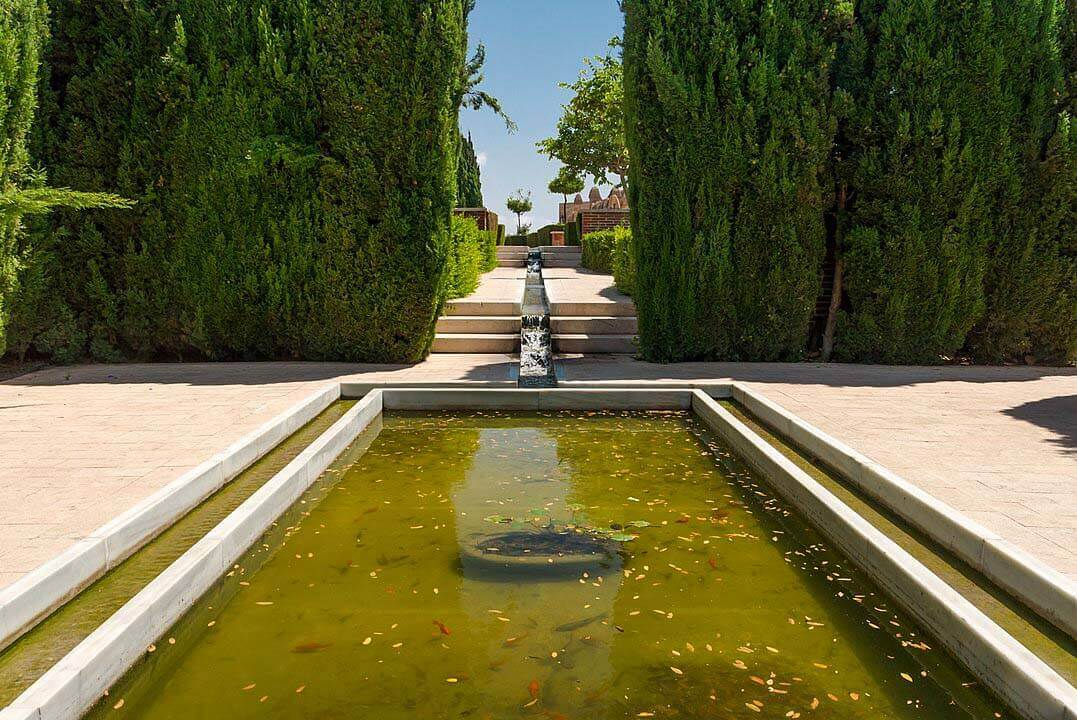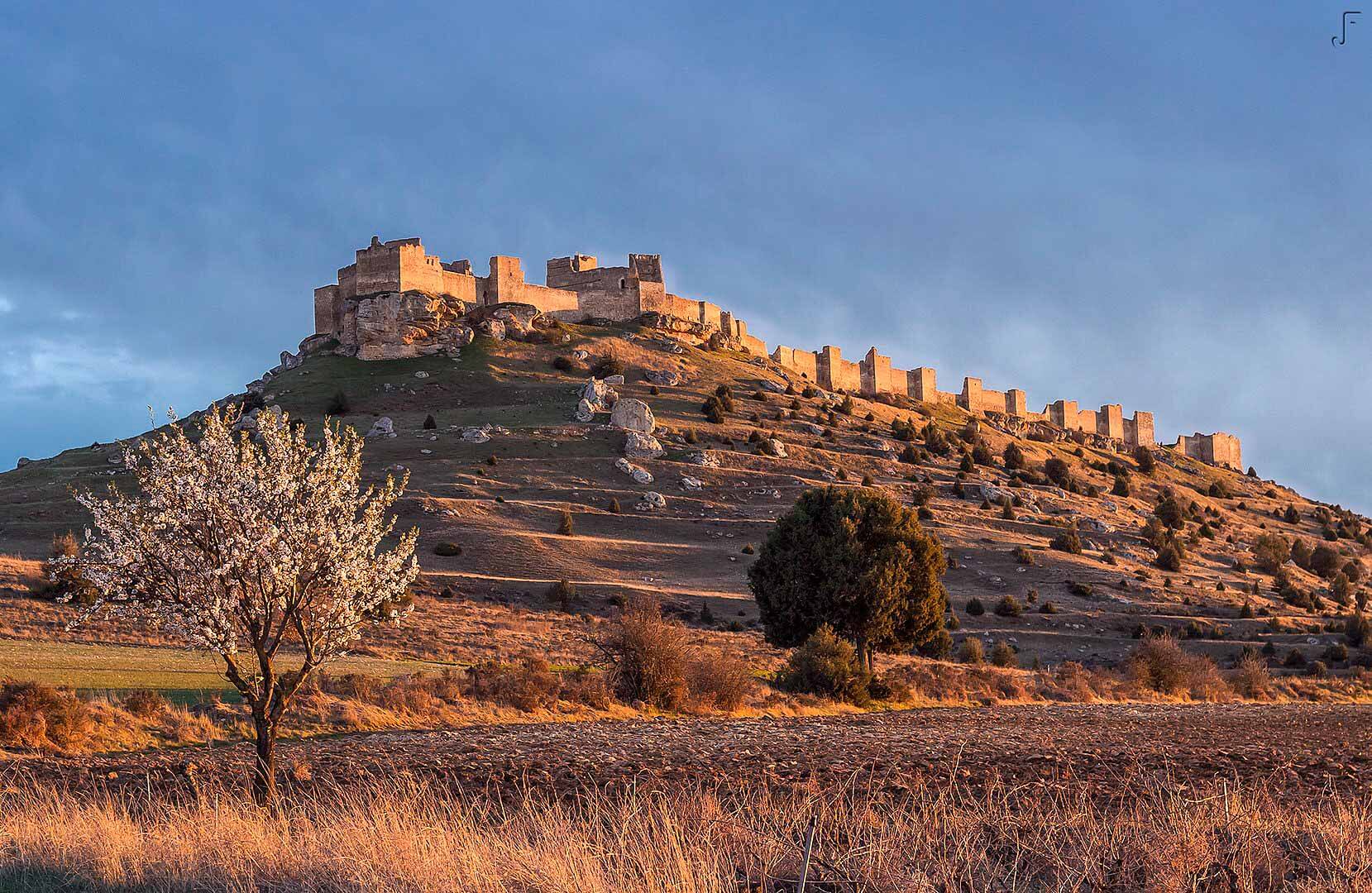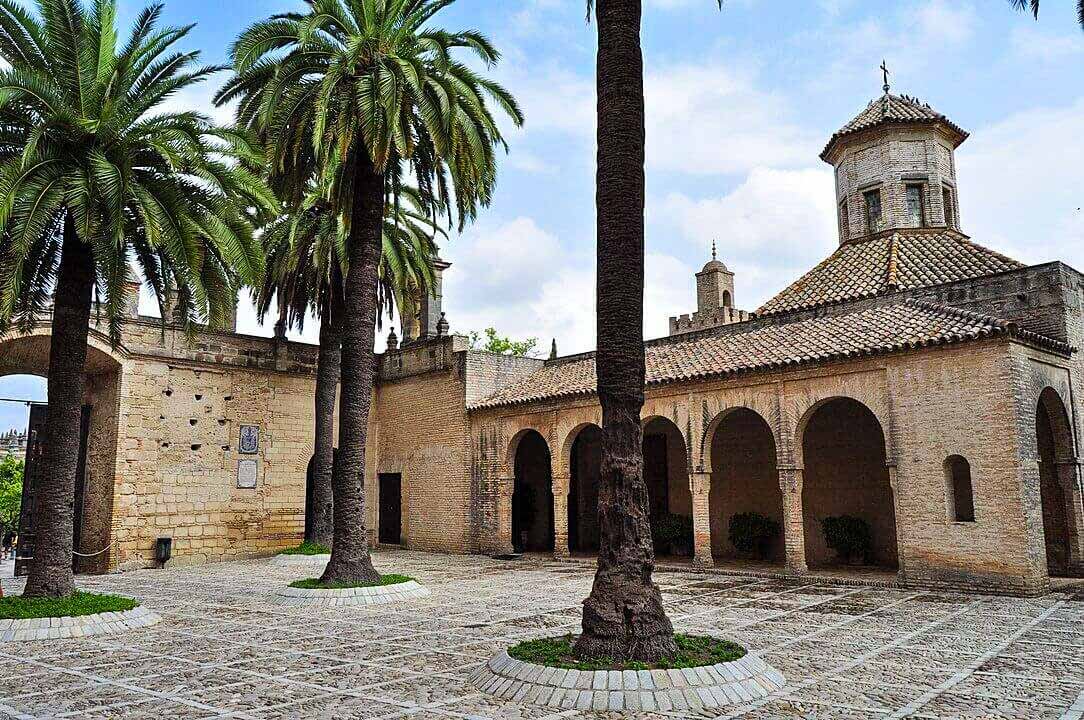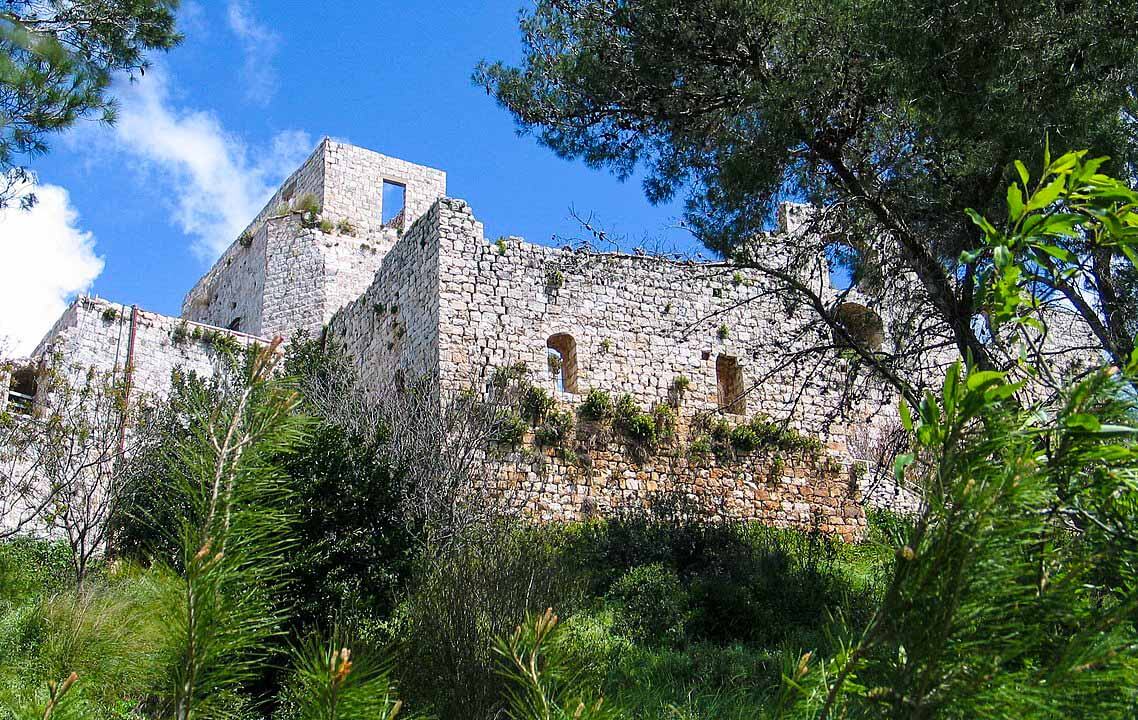Almería, Spain
Coordinates: 36.840830, -2.470830
The Alcazaba of Almería is a fortified complex in Almería, southern Spain.
The word alcazaba, from the Arabic word, signifies a walled fortification in a city.
In 955, Almería gained the title of medina (“city”) by the Caliph of Cordoba, Abd ar-Rahman III: construction of the defensive citadel, located in the upper sector of the city, began in this period.
The alcazaba, provided not only with walls and towers but also with squares, houses and a mosque, was to be also the seat of the local government, commanding the city and the sea nearby.
This was once the largest defense citadels in Spain.
It is very similar to Alhambra but not as grand in scale.
The complex was enlarged under caliph Al-Mansur and, later, under Al-Jairan, first king of the independent taifa of Almería (1012–1028).
Its intention was to protect the area’s largest city at the time, Pechina.
It is a stronghold which housed three campuses; the first two are Muslims and one Christian, last built after the conquest of the city by the Catholic Monarchs, which occurred in 1489.
The first line of walls is a wide enclosure corresponding to the first Muslim military camp, used as shelter for the population in case of siege. For this task it was provided with large cisterns.
In the second enclosure was the residence for the governors, their soldiers and their servants. It included also the mosque, baths, tanks, tents etc.
The third enclosure, the most external, is also the most modern in the complex. After the Christian conquest of Almería, the Catholic monarchs Isabella I of Castile and Ferdinand II of Aragon had a castle built in the most elevated sector of the town, more apt to resist the new gunpowder artillery.
A part of this defense structure is off limits and still under archeological explorations and parts of complex are unsafe for public viewing.
There is a small museum area that documents the residence and activities of the former inhabitants.
Know this
There is no car park, and is difficult to access by road owing to the lack of signs.
Go to the castle in the morning and spend all day. It’s free. No tickets required
It is a steep climb to get up here but the views are amazing and you do get a sense of history.
Good walking shoes, water in a little bag and du block if you are sensitive to the sun. Clean toilets available for free in site.




